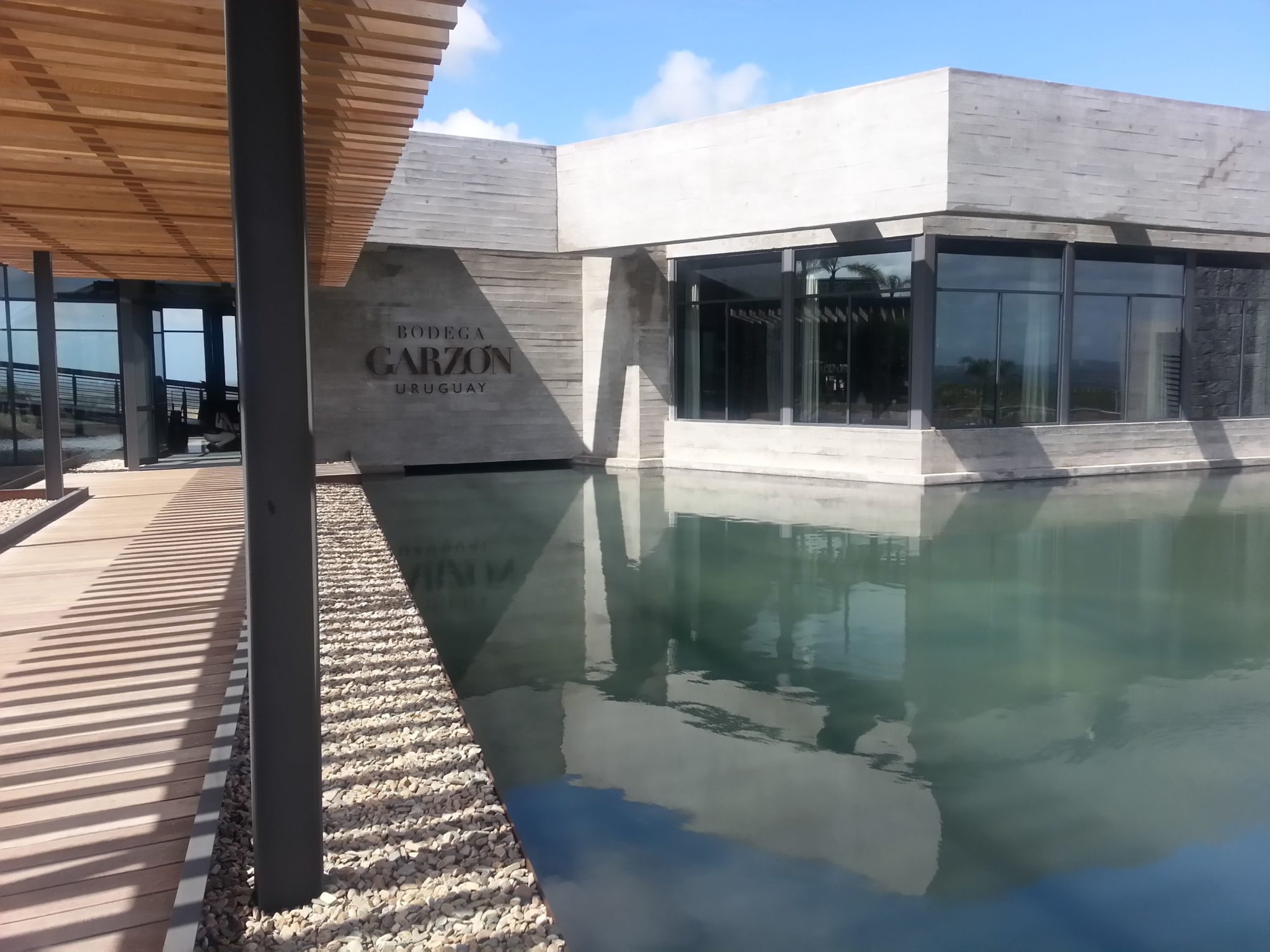Alejandro Bulgheroni’s quiet, soft spoken persona belies his drive. He didn’t earn the ranking by Forbes magazine as the 326th richest person on earth, or acquire a portfolio of 12 wineries in less than a decade by shunning risk or wearing blinders.
Bulgheroni’s fortune came from the high stakes world of oil and gas exploration in his native Argentina, the United States and the Middle East. But his fame might find longevity in the wine world. Take Bodega Garzon.
In 1999, then, 55 year-old Bulgheroni bought 12,000 acres of raw land in a rural area of Uruguay. Responding to his wife Bettina’s request for olive trees to make their own olive oil, Bulgheroni planted a 1,500 acre olive grove with more than 150,000 trees, making Bulgheroni the largest olive oil producer in Uruguay. And he envisions planting another 360 acres.
Pleased with his olive groves, Bulgheroni thought that grapevines might also thrive, even though no one else had a vineyard in that part of Uruguay.
In 2007, Bulgheroni consulted his Argentine friend and vintner Carlos Pulenta, and hired Italian wine consultant Alberto Antonini; he was advised that the soil and climate were conducive for grapevines. Bulgheroni created Bodega Garzon in honor of Eugenio Garzon, Uruguayan soldier and statesman who fought for Uruguay’s independence from Brazil.
With a pioneering spirit, hillsides were cleared for planting, while preserving the topography and its natural drainage. The idea was to have organic vineyards; but with the area’s oceanic climate and no viticulture history, Bulgheroni and Antonini hedged their bet with a limited use of fertilizers and chemicals.
They planted tannat — a red grape migrant from France’s southwest vineyards and Spain’s Basque region— in north facing slopes at about 250 feet above sea level. And the white grape albarino was planted in south facing vineyards at half that height.
Choosing tannat was not without risk. Uruguayan wineries have sent the world too many harsh, tannic (thus the grape’s name) tannats. “The problem with a lot of Uruguay tannats is they come from vineyards that do not have rocky soils and lack drainage, “ said Antonini.
Pleased with the results of their first wines in 2010, the vineyards were expanded to 528 acres, adding pinot noir, cabernet sauvignon, petit verdot, merlot, sauvignon blanc and viognier. And experimental red grapes marsalan and caladoc were planted. Confident that their pioneering days were successful, Bulgheroni and Antonini ended fertilizer and chemical usage in the soil.
With the vineyards yielding quality grapes, Bulgheroni focused on building a new winery.
Educated as an engineer, Bulgheroni wanted Bodega Garzon to be the first LEED (Leadership in Energy and Environmental and Design) certified private winery and hospitality building in the world. The duality consists of a ground floor 100 seat indoor and 60 seat veranda restaurant; a private club that begins in a wine cellar with a kitchen and dining area, then moves by private elevators to second-floor meeting rooms, kitchen and dining terraces.
Never thinking small, Bulgheroni’s 77,300 square foot winery/hospitality center is built from granite excavated from the site, has glass walls that architecturally merge with the hillside vineyards, and native species living in the natural habitat created on the roof. Perhaps, it is creating a new LEED term: a Bulgheronian edifice.
But if you’re Bulgheroni, the vision is rarely complete. After driving nearly three hours from Uruguay’s capital city Montevideo, or an hour from the chic coastal resort city Punta del Este, you might want to spend the night or the weekend. So, on the architects drawing board is the Bodega Garzon hotel to be built in the middle of the vineyards; which is only a short cart ride away from Bulgheroni’s private 18-hole golf course.
And if you’re wondering about the wines, Antonini’s intuition that Bodega Garzon’s proximity to the Atlantic Ocean and its abundant rainfall mimicked the climatic conditions of Spain’s Riax Baixas region where the albarino grape thrives was dead on.
The lemon, grapefruit zest and thyme aromas of the 2015 Bodega Garzon Albarino are as vibrant as the horn section of a jazz band. Then, the pear and guava flavors please the palate with the richness and depth of a bass player. 94 points. And when the cashier tells you it’s less than $20, it will be music to your ears.
Antonini and Bulgheroni didn’t start with sauvignon blanc, but you’ll be happy to finish with it. The 2015 Bodega Garzon Sauvignon Blanc shares albarino’s medium body and citrusy aroma, while snapping on a current of lemongrass scent. Delicious white grapefruit flavors with perfectly balanced acidity gallop around your mouth. It was remarkable with a grilled loin veal chop, sautéed eggplant and yellow pepper. 95 points. And like the 2015 Albarino, it’s all sweetness at less than $20.
I intermittingly tasted the 2013 Bodega Garzon Tannat during the first hour it was in my decanter, witnessing its progression from a tight-fisted opponent to an open-handed friend.
The opaque red color resembled a dark red rose and the red fruit, toasted oak and oregano scents were not shy. Beyond the one-hour mark, savory raspberry and black cherry flavors made their appearance riding on a beam of steely tannins that sliced through the grilled fat of my pork chop coated with mustard sauce. Antonini drained the harshness from Bodega Garzon’s tannat and I drained my glass with the last forkful of the pork chop. 91 points. A remarkable good-value at less than $18.
As Bulgheroni’s vineyards mature and his hospitality vision is fulfilled, he might find acquiring fame in the wine world is much more fun and longer lasting than digging another oil well.










Seems like a good reason to visit Uraguay John